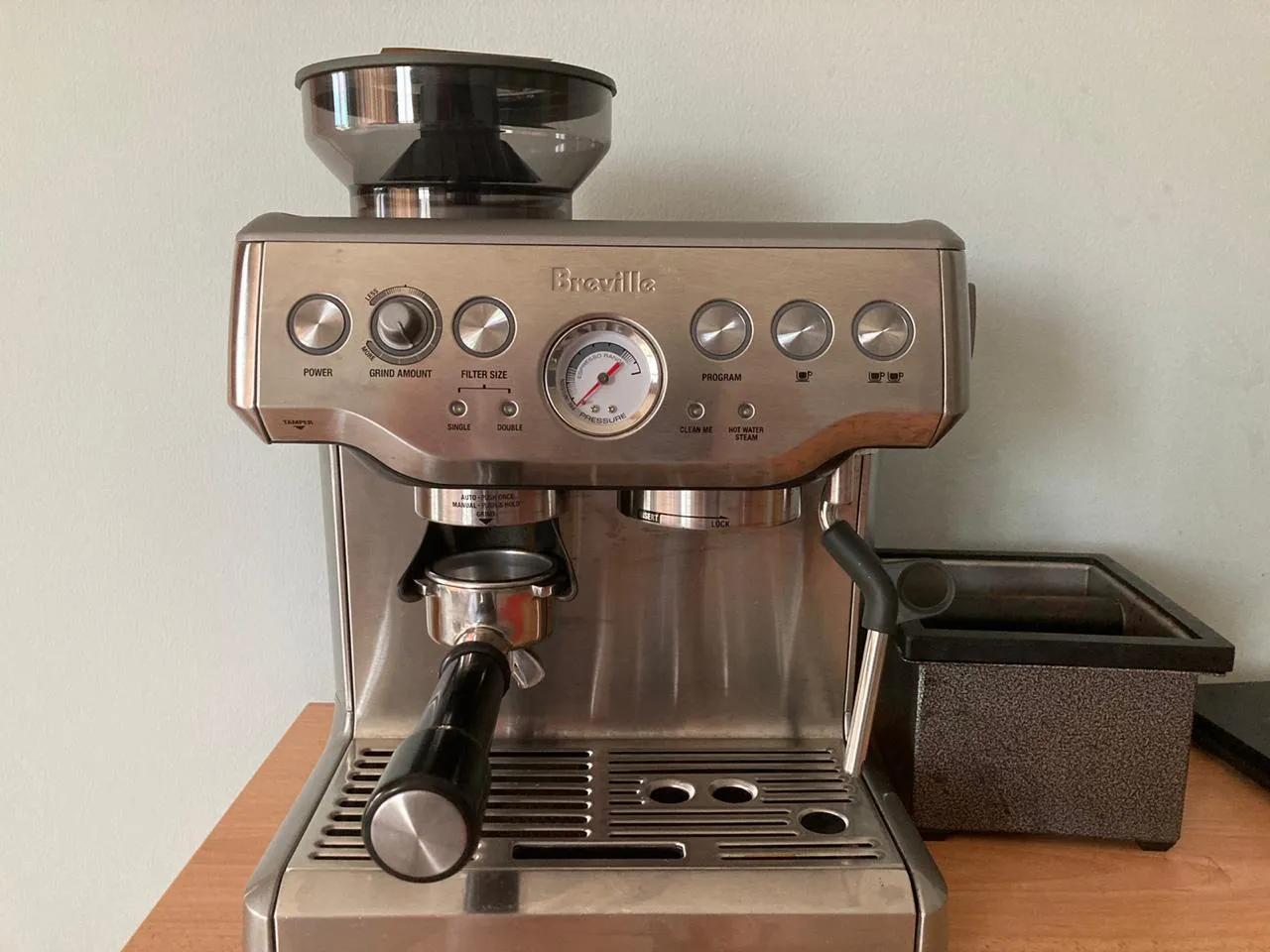
The Barista Express by Breville is my first (and current) espresso machine. It is wonderful as it has a built-in grinder, and includes most of the tools and equipment you’d need (except a knock box).
The machine is well built, and after four years I was able to keep it shiny, in good shape, and operating just as well as I first bought it.
Pulling a Shot
Making good espresso isn’t something you can easily master, that is something I only learned recently — when I finally started making espresso which actually tasted great.
My current process in making an espresso goes like:
- Measure 18g of coffee, put it in the grinder.
- Rinse and dry the portafilter, heating the group head.
- Set the grind size, and grind (sometimes directly to the portafilter).
- Distribute the ground coffee evenly in the portafilter.
- Tamp the coffee and put it in the group head.
- Place the scale and cup, zero the scale.
- Manually pull the shot, releasing the two cup button when I see espresso.
- Stop when I reach 38g of coffee, or the roaster’s recommendation.
I repeat this process, adjusting the grind size and amount, until I pull a good shot.
There were many mistakes I used to do as a beginner, such as:
- Not using good quality coffee (don’t use Starbucks coffee).
- Not measuring the coffee in/out.
- Not measuring the time to pull the shot.
You have to be consistent to pull great shots, and this is one of the down-sides of making espresso at home. Good coffee shops do all this for you so you don’t have to.
An issue with the grinder is that it retains some old coffee grounds, which can ruin the first shot. Also I found out that coffee beans get stale much faster if you store them in the grinder hopper, even if it is a small amount. So now I only measure exactly the amount of coffee beans before I put it in using a scale and the hopper lid, this made a huge difference.
Energy Usage
The machine uses 1550 watts when heating, and 1590 watts when pulling a shot. It takes 0.035 kWh to make an espresso, and 0.055 kWh for a latte, from when the machine is powered and cooled off.
Also sometimes I turn on the espresso machine just to get a cup of hot water, I worried this was inefficient. But comparing it with the kettle, it only uses 0.030 kWh the kettle uses 0.038 kWh for a cup of water.
Also my machine seems to draw 0.3 watts when powered off.
Maintenance
Keeping the machine clean from the outside isn’t enough to keep it working well. The machine has a “Clean Me” light, which indicates that the machine needs to be descaled using descaling tablet and the cleaning disc.
Also every few months, you need to decalcify the machine using a mixture of vinegar and water (1:1 or 1:2 depending on water hardness). There is also a charcoal water filter that needs to be replaced every two months.
Cleaning the grinder is a bit more tricky, it has to be free of coffee grounds before removing to make it easier to disassemble and reassemble the parts.
One thing I overlooked (which is also missing from the maintenance guide in the manual) is cleaning the inside of the group head, it had coffee silt causing uneven water distribution.
Summary
This is a great beginner machine for those looking for a new hobby. If I’d rather buy a new coffee machine, I’d go with the Breville Precision Brewer — which isn’t an espresso machine, but a filter coffee brewer.
This is my seventh post in the #100DaysToOffload challenge.